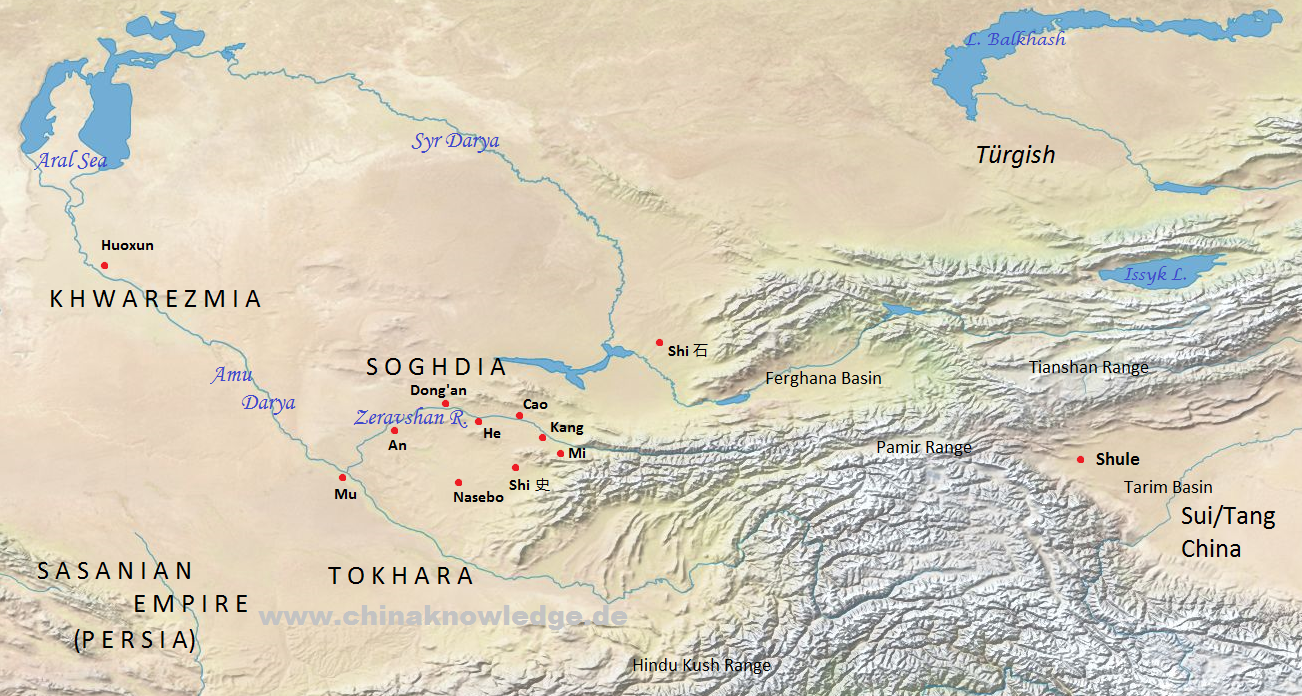The state of Shiguo 史國, also called Qusha 佉沙, Jieshuangna 羯霜那 (derived from the word Kushana), Qishi 乞史 or Keshi 渴石, was located in the area of modern Shahrisabz in Uzbekistan, a land formerly known as Soghdia or Soghdiana, in Chinese Sute 粟特. Traditional accounts say that the city was founded by one of the Nine Tribes from Zhaowu (Zhaowu jiuxing 昭武九姓). During the Han period 漢 (206 BCE-220 CE) the place had been called Suxie 蘇薤 and belonged to the country of Kangju 康居. The Zhaowu tribe founded its seat south of River Dumo 獨莫. It had a circumference of about 1 km and was able to raise more than 1,000 troops. It is known that the troops used to deliver prayers to the city deity before setting out for campaigning.
 |
The Soghdia around 600 CE. Based on Tan Qixiang 譚其驤, ed. (1995), Zhongguo lishi ditu ji 中國歷史地圖集, Vol. 5, Sui, Tang, Wudai Shiguo shiqi 隋唐五代十國時期 (Beijing: Zhongguo ditu chubanshe, 1996). |
In the late 6th century the state became independant and comprised several hundred walled cities. The country of Shiguo was an important spot at the Silk Road that connected east and west, and controlled the Rivers Amu Darya and Syr Darya and the mountain road to India via the Hindukush Range.
Shiguo paid tributes to the court of the Sui dynasty 隋 (581-618). Emperor Gaozong 唐高宗 (r. 649-683) of the Tang dynasty 唐 (618-907) established an indirectly administrated prefecture (jimizhou 羈縻州) there called Qusha 佉沙, and appointed King Zhaowu Shi'ake 昭武失阿喝 formally regional inspector (cishi 刺史). In 727 King Hubi 忽必 sent to the Tang court dancers and "patterned leopards" (wenbao 文豹). During the reign of Emperor Xuanzong 唐玄宗 (r. 712-755) the name of the country was changed to Laiwei 來威. In the 8th century the region was conquered by Muslim invaders.